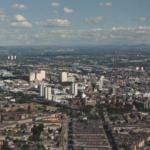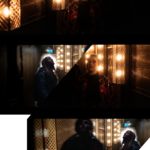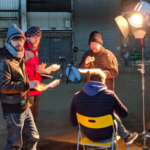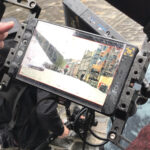It’s fair to say that we at Production Attic like to create the best possible content for our clients. We love going out on location and filming ourselves, but sometimes the requirements of a project don’t quite fit that model, either for budgetary or practical reasons. In these instances, we’ve often relied on the use of stock footage to really enhance the end quality.
What is stock footage? And how do we use it?
Stock footage is typically a generic video asset that can be used and reused across many different projects. This may include landscapes in cities and nature, wildlife, people in assorted work or leisure scenarios, popular landmarks, and much more. These can be assembled to serve whatever purpose is required for your original project.
There are many good reasons to use stock footage, especially given the high quality and range of materials available. Primarily, it allows you to represent a huge range of scenarios and locations within your video that would normally require a massive budget to achieve if you filmed them all yourselves. Our films for Satellite Applications Catapult feature footage from across continents, in stormy weather, and even up in space!
We’ve produced a number of films where stock footage functions as the primarily b-roll for our narrative. For instance, throughout the Covid-19 pandemic we were unable to film in person; instead, we would conduct talking head interviews over Zoom and identify stock which could serve the overall themes of that video, as our filmed b-roll would traditionally do. It allowed us to adapt to the struggles of the pandemic, and meant we could still deliver a quality end product to the client.
We’ve also been able to integrate stock footage into animation-based projects, using the video as either a background, or supplementary to text and graphics to create a more dynamic presentation. When we’re building films for a business-minded client like Akari, it’s a wonderful asset that allows us to have a range of different workplace scenarios such as meetings, one-on-ones, solo working and more.
Another avenue where stock proves to be advantageous is getting shots that would typically be outside the scope of a project, but would really enhance the overall feel of the film. For instance, there’s a vast range of aerial footage now available across stock footage libraries, from generic scenes of forestry and oceans, to cities and notable landmarks. Drone filming is an expensive and complicated process, so being able to grab a stock clip of London above the Thames rather than paying for a licensed drone operator and having to go through all the risk assessment and permissions… you can see the upside.
We’ve recently repurposed some of our lovely helicopter footage from A Symphony in Stone to represent Glasgow across this McDonald’s social media campaign.
Of course, stock footage also has applications outside of the end product. We’ve used stock footage to build detailed animatic concepts, when the production schedule has required us to get client approval on the shape of a video before we’ve actually completed filming. You can read what our creative director Matt has had to say about this process for our OVO Hydro shoot earlier this year.
We’ve used stock footage abstractly to create visually striking image collages; we’ve used crowd footage from concerts to bring music videos to life; we’ve used footage from lovely sunny days after it rained when we tried to film there. The amount of variety you can achieve utilising only stock footage is positively endless.
Where can I find good stock footage?
You’ll generally find two ways to purchase stock footage online: by subscription and per clip. Subscription services like Storyblocks and Artgrid allow you to pay a flat fee to gain access to their entire library of content, allowing you maximum freedom to explore the possibilities of stock footage within your project.
Other services such as Pond5 and Shutterstock will charge you for every individual clip (or let you purchase a subscription for a set number of clips per month), though these sites are often better for footage of more specific subjects, such as a political protest or archival footage of a particular event. This is sometimes an essential resource for factual and documentary content, where the more generic stock footage just might not cut it.
Utilising stock footage to its fullest potential is just one of the many ways Production Attic is able to deliver quality video content to all of our clients, no matter how big or small their budget. If you have a project in mind, drop us a line at contact@productionattic.com and let us bring it to life.










